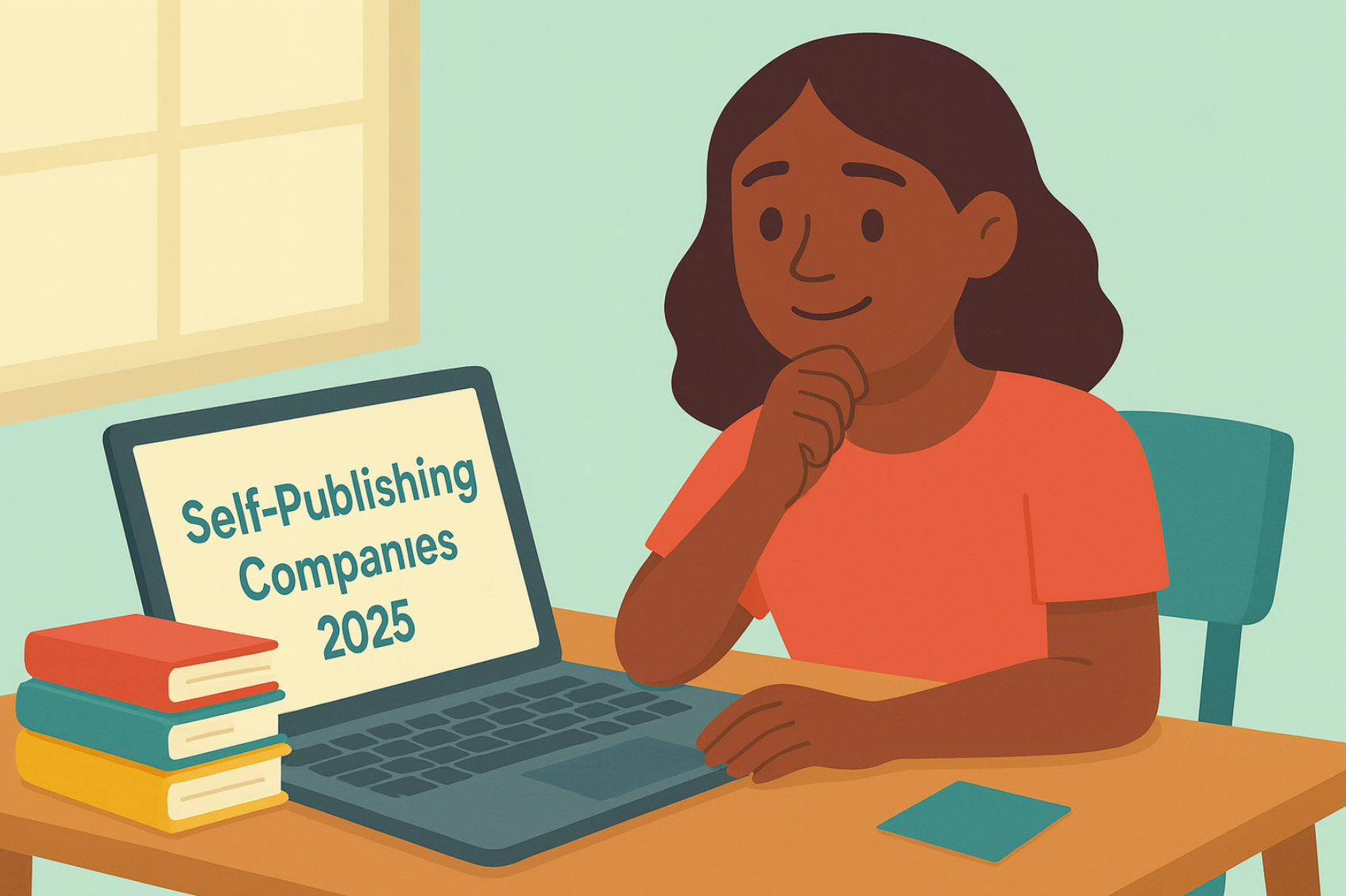Did you know the publishing industry uses over 30 million trees each year just for book production in the U.S. alone? Combine that with the carbon emissions from printing, packaging, and shipping, and it’s clear—publishing has a big environmental footprint. As readers, authors, and publishers, we all play a role in changing this.
Going green isn’t just a trend; it’s crucial for the future of our planet. In 2024, sustainable book publishing matters more than ever, and together, we can help write a better, more sustainable goals eco-friendly chapter for the industry.
Your Publishing Journey Awaits – Start NowThe Environmental Impact of the Publishing Industry
The publishing industry has long been associated with creativity and knowledge, but it also has a significant environmental footprint. The production of physical books contributes to deforestation, high energy consumption, and waste. Each year, the industry consumes millions of trees and uses vast amounts of water and chemicals in paper production. On top of that, the energy required for printing, packaging, and shipping books adds to the industry’s carbon emissions.
It’s estimated that book publishing generates around 12.4 million metric tons of carbon dioxide annually. Unsold books often end up in landfills, contributing to even more waste. From the cutting of trees to the transportation of finished products, each stage of the book-making process impacts the planet. By acknowledging these environmental challenges, the publishing industry has the opportunity to shift toward sustainable practices that reduce its carbon footprint and help preserve our natural resources for future generations.
By making more environmentally responsible choices, the book industry can align with growing global efforts to combat climate change and reduce its environmental impact.
Recycled Paper: A Game-Changer for Sustainable Publishing
One of the most significant ways the publishing industry can reduce its environmental impact is through the use of recycled paper. Traditional paper production contributes to deforestation and consumes vast amounts of water and energy. By switching to recycled paper, publishers can significantly reduce their carbon footprint, reduce emissions, and conserve valuable natural resources.
Using recycled paper can cut down energy consumption by up to 40% and reduce water usage by 50% compared to producing virgin paper. Additionally, it minimizes the demand for raw materials, helping to preserve forests and reduce the negative effects of logging on ecosystems. According to the Forest Stewardship Council (FSC), sustainably sourced paper helps ensure responsible forest management practices, protecting wildlife and biodiversity while supporting local communities that depend on forests for their livelihoods.
Beyond the environmental benefits, recycled paper also helps reduce landfill waste. Paper that’s been used and recycled can find a new life in books, reducing the need for wasteful disposal. Moreover, thanks to advances in technology, today’s recycled paper can be just as high-quality as virgin paper, providing the same feel and reading experience that readers love, without the environmental cost.
By embracing recycled and FSC-certified paper, publishers can lead the way toward a greener, more sustainable future, proving that great stories don’t have to come at the expense of our planet.
Carbon Emissions and the Publishing Industry’s Role in Climate Change
The publishing industry contributes significantly to carbon emissions, and it’s not just the paper that’s the problem. From the energy-intensive printing processes to the transportation of books around the world, each step of book production releases greenhouse gases that impact the climate. On average, the carbon footprint of a single printed book can range from 2.7 to 7.5 kg of CO2, depending on the size and materials used.
The printing process itself is energy-heavy, and traditional printing methods often use fossil fuels, further contributing to the industry’s overall emissions. Then there’s the transportation of books, which involves packaging and shipping thousands of copies to retailers, bookstores, publishing associations, and readers across the globe. This logistical process adds a significant layer of carbon emissions, particularly for large print runs that may not sell out, resulting in unsold inventory and waste.
Reducing carbon emissions has become a critical focus for the industry, and many publishers are adopting carbon offset programs to neutralize their emissions. By investing in renewable energy projects or reforestation efforts, publishers can balance out the carbon produced during the manufacturing and shipping of their books. Some publishers are even striving for carbon neutrality, where their total emissions are offset entirely.
The path to reducing emissions lies in adopting more sustainable practices, such as print-on-demand models, which minimize waste and the need for mass transportation. By using environmental practices and addressing its carbon footprint, the publishing industry can play a key role in the global fight against climate change, creating a more sustainable future for both the environment and book lovers everywhere.
Sustainable Practices: How Publishers Are Making a Difference
To combat the environmental challenges facing the industry, publishers are embracing a range of sustainable practices that reduce waste, lower carbon emissions, create more, and conserve resources. One of the most significant shifts has been toward print-on-demand technology, which allows books to be printed only when there is an order. This eliminates the need for large print runs, reducing both excess inventory and the energy required to print, store, and ship unsold books. By printing only what’s needed, publishers are cutting down on overproduction and the waste it creates.
Another key area of focus is the use of vegetable-based inks in printing. Traditional petroleum-based inks contribute to pollution and are more difficult to recycle, but vegetable-based inks, derived from soy or other plant oils, are much more environmentally friendly. They break down more easily, reducing the harmful effects on the environment, and they’re safer for recycling paper, making them a greener alternative for the publishing process.
In addition to changes in production methods, some publishers are also adopting eco-friendly packaging. Replacing plastic wraps with biodegradable or recyclable materials helps with energy usage and reduces the impact of shipping physical books. For example, publishers are opting for paper-based tapes and cushioning to protect books during shipment, minimizing plastic use and supporting a more sustainable future.
Many publishers are also working to make their entire supply chain more eco-conscious, from sourcing FSC-certified paper to reducing energy consumption in their printing facilities. Some are investing in renewable energy sources to power their operations, further their environmental goals, and decrease their carbon footprint.
These changes are not just good for the planet—they’re good for business, too. Readers are increasingly looking for companies that align with their values, and sustainability is becoming a priority. By adopting these environmentally friendly practices, publishers can not only help protect the planet but also appeal to eco-conscious readers who want to feel good about the books they buy.
Your Publishing Journey Awaits – Start NowDigital Publishing: A Sustainable Option?
As we move further into the digital age, digital publishing has emerged as an increasingly popular and seemingly eco-friendly alternative to traditional printed books. At first glance, the environmental benefits of eBooks and digital formats seem clear: no paper, no ink, no shipping. But the reality is more nuanced than it may appear.
Digital publishing does offer a more sustainable option in many respects. With no need for physical materials, digital books eliminate the need for paper production, printing, and transportation, all of which have a significant environmental impact. By reducing the demand for raw materials and cutting out the carbon emissions associated with shipping, eBooks seem like a clear winner in the quest for sustainability.
However, there are downsides. E-readers and tablets, which are essential for reading digital books, have their own environmental cost. The manufacturing process of these devices involves the extraction of raw materials, including rare earth metals, and energy-intensive processes. Once the devices reach the end of their life cycle, they often contribute to e-waste, which poses its own set of environmental challenges. Additionally, the electricity used to power these devices and store data in cloud servers adds to their carbon footprint over time.
So, is digital publishing truly more sustainable? The answer depends on how it’s used. For readers who consume a large number of books, the environmental benefits of eBooks can outweigh the initial impact of producing an e-reader. On the other hand, if e-readers are discarded quickly or replaced often, their environmental advantage diminishes.
Ultimately, while digital publishing offers a promising path toward reducing the environmental impact of the book industry, it’s not a perfect solution. Readers and publishers alike should consider the lifecycle of their devices and digital reading formats as part of a broader strategy for creating a more sustainable future for books.
Sustainable Book Publishing: Why Sustainability is the Future of Publishing
The future of publishing is green. As readers, writers, and publishers, we all have a role to play in ensuring that the stories we love don’t come at the cost of the planet. Whether it’s through the use of recycled paper, adopting sustainable printing practices, or supporting digital formats that minimize waste, every step toward sustainability counts.
In 2024, the push for more environmentally responsible publishing practices is stronger than ever, and it’s clear that going green is no longer just a trend—it’s a necessity. Publishers who embrace sustainable practices aren’t just protecting the environment; they’re also positioning themselves to meet the growing demand for eco-friendly products from readers who care about the planet.
By making mindful choices about how books are produced, printed, and distributed, we can all help reduce the carbon footprint of the industry and ensure that future generations can enjoy the magic of books—without harming the world we live in. The time to act is now, and together, we can write the next chapter in sustainable book publishing.
At Spines, we’re committed to supporting sustainable publishing practices and empowering authors to make environmentally conscious choices. Whether you’re a writer looking to publish your next masterpiece or a reader passionate about eco-friendly stories, join us in creating a greener future for books. Explore our platform and discover how we make publishing simple, sustainable, and impactful. Let’s write the next chapter—together.
Your Publishing Journey Awaits – Start Now






